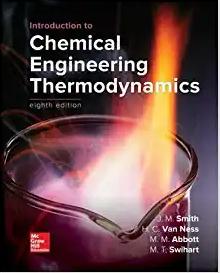Answered step by step
Verified Expert Solution
Question
1 Approved Answer
Problem 6 ( 2 pts ) . Suppose the droplet is water. A quick trip to Wikipedia reveals that the latent heat of water in
Problem pts Suppose the droplet is water. A quick trip to Wikipedia reveals that the latent heat of water in can be calculated using the following:
T must be in Celcius.
This is a polynomial fit to tabulated values of vs given by Rogers and Yau in a famous monograph called A Short Course in Cloud Physics. The thermodynamic properties of water and the solubility of trace gases in water are highly interesting in atmospheric science and, incidentally, in aqueous process control for, eg photochemical treatment of drinking water. The acceptable margin of error for water properties over a wide range of conditions is small when and are close to unity. Recall that and are mass and mole fractions.
a What is the latent heat of water at Celcius?
b Assume liquid water has a mass density of This is often referred to as "unit density," meaning the density is unity the unit is assumed to be What is the rate of energy consumption associated with the evaporation rate of water in this description, at this temperature?
c Note that the example given does not necessarily accurately reflect the evaporation rate of real water droplets, nor is the evaporation rate constant. What added complexity is missing? Please format as a bulleted list of three to five other considerations.

Step by Step Solution
There are 3 Steps involved in it
Step: 1

Get Instant Access to Expert-Tailored Solutions
See step-by-step solutions with expert insights and AI powered tools for academic success
Step: 2

Step: 3

Ace Your Homework with AI
Get the answers you need in no time with our AI-driven, step-by-step assistance
Get Started


